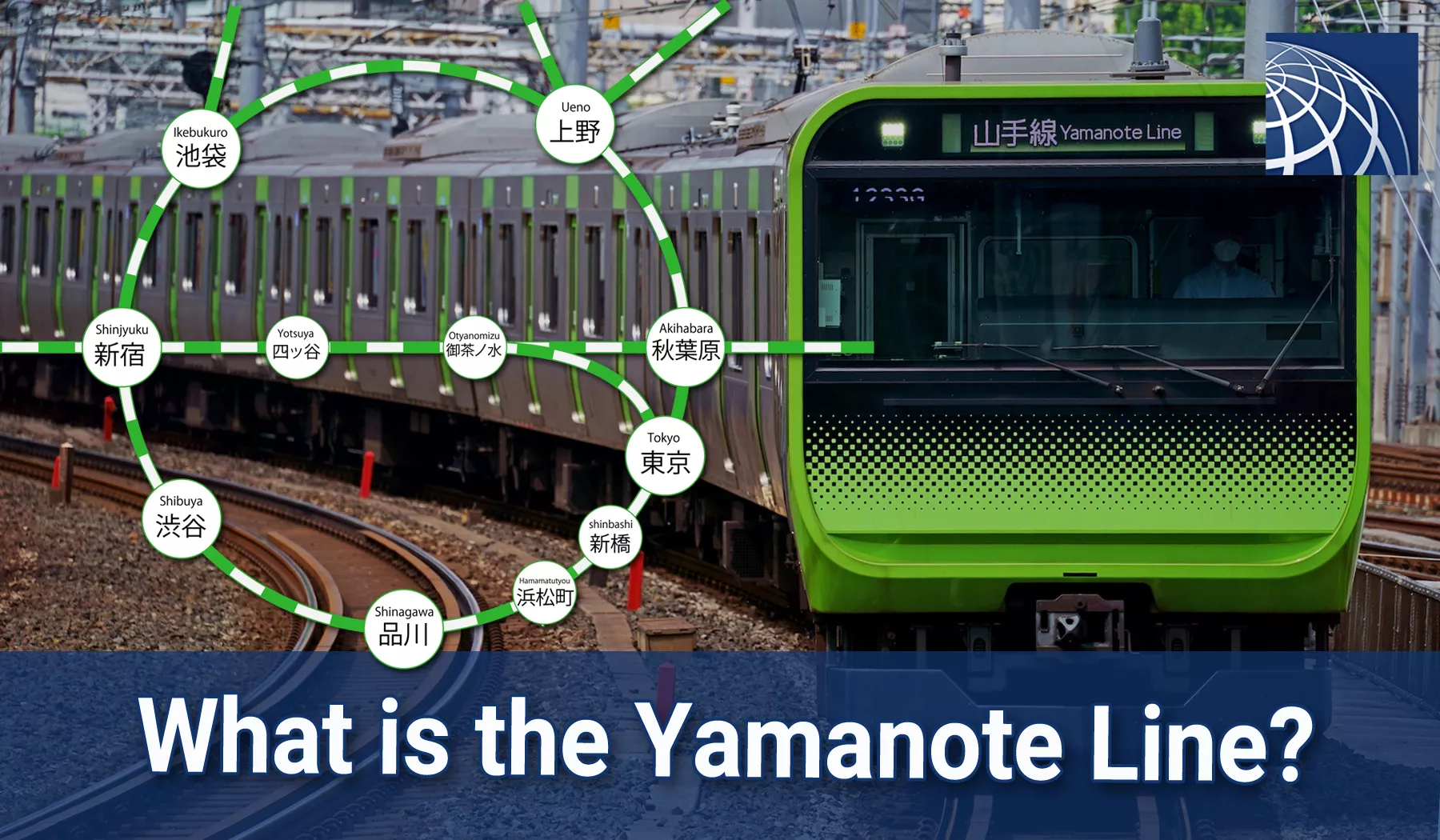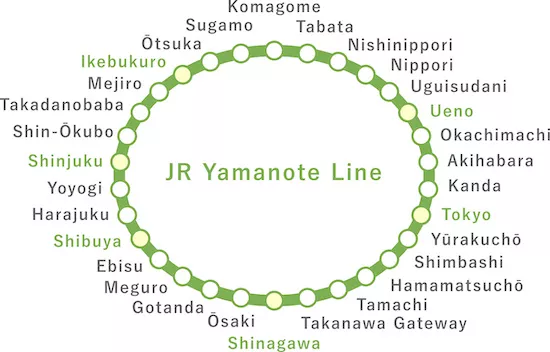What is the Yamanote Line? The history and its Origin

The JR Yamanote Line is an important railway line supporting Tokyo's huge transport networks, circling the center of the city and connecting the main transport routes. Government offices, business districts and commercial areas are concentrated inside and along the Yamanote Line. As a loop line, the route map is easy to follow and there are many transfer stations with trains leading to other parts of Japan, making it very convenient for foreign tourists as well.
In terms of convenience, "inside the Yamanote Line" gives the impression of a prestigious location in the heart of the city and has high asset value. The Yamanote Line is also a popular location for finding rental properties and properties for sale, and many high-end residential areas are located along the Yamanote Line.
In terms of accessibility, the 'inner Yamanote Line' gives the impression of being a prime location in the city center and has high property values. The Yamanote Line is also a popular location for finding rental properties and properties for sale, and there are many exclusive residential areas along the Yamanote Line. This article details the beginnings of the Yamanote Line and the origin of its name.
What is Yamanote Line?

The Yamanote Line is a loop line connecting the major cities of Tokyo, stopping at 30 stations and taking approximately 60 minutes to complete its 35km length. It is also characterized by frequent departures at intervals of approximately 3-5 minutes. As it is a loop line, it is not indicated with a 'destination' but with "Outbound" for clockwise direction and "Inbound" for anti-clockwise direction.
> Finding a Train Route in Tokyo
Starting from Shinagawa Station, trains heading towards Ebisu and Shinjuku are outbound, while those heading towards Shinbashi and Tokyo are inbound. The last train terminates at either Shinagawa, Osaki or Ikebukuro Station.
> IC Cards in Japan: Traveling with Suica, PASMO and More
The Yamanote Line, also known as the Loop Line, is actually divided into three lines. Shinagawa Station to Tabata Station via Shinjuku Station is connected by the Yamanote Line, Tokyo Station to Shinagawa Station by the Tohoku Line, and Shinagawa Station to Shinagawa Station by the Tokaido Main Line. The background to the 3 lines is related to its history.
History of the Yamanote Line
The Yamanote Line began running in 1885, connecting Shinagawa Station to Akabane Station via Shinjuku. At the time, the line didn't carry passengers; instead, it served as a freight train that carried supplies to the outlying areas. The loop line as we know it today was not formed until 1925, after the line had been gradually built up. The combination of the various lines mentioned above resulted from the gradual increase in the number of lines.
Origin of the Name - Yamanote
Yamanote (or Yamate) is a term referring to a slightly elevated area, and the western area of the Tokyo metropolitan area is also called Yamanote. The Yamanote Line's initial route between Shinagawa and Akabane gave rise to its moniker as a line connecting the Yamanote region. Incidentally, the opposite of Yamanote is " Shitamachi," which includes Asakusa, Nihonbashi, and Ningyocho.
The hilly neighborhood in Yokohama, also known as Yamate, used to house a large number of foreigners. There are several other places in Japan with the name Yamanote or Yamate.
There was a time when the Yamanote Line was called "Yamate-line," but it is now officially unified as "Yamanote-line".

- Rental Apartments & Houses in Tokyo
- Listings of popular and luxurious rental apartments, condominiums, and houses designed with expats in mind.

- Apartments & Houses for Sale in Tokyo
- Listings of apartments, condominiums, and houses available for purchase in Tokyo.



















